Javea Coast
BEACHES AND COVES
The uniqueness of Jávea’s coast, shaped by sea, wind and time, make the existence of many different landscapes possible. These landscapes consist of a wide variety of beaches and sand coves.
Open beaches, such as the Arenal or the Grava beaches, and small crystal-clear-water coves, such as the Barraca, the Ambolo and the Granadella coves, spread out Jávea’s 25-kilometre long coast. These hideouts are also perfect for practising watersports and for hiking the various paths that outline Jávea’s coast. Due to its high environmental value, the access to some of them might be restricted. Please, check with the corresponding Tourist Office before your visit.
Cova Tallada
It is located in Sant Antoni Cape’s Natural Reserve and it is a big cave opened to the sea (400 m). It was mainly drilled by hand in order to extract tufa from it. Undoubtfully, it is one of the best places to practice snorkel. It can be access from the sea, by kayak or canoe, or from the mountain paths of the Montgó. Once there, it is possible to access the water from the very same cave. There, we will find a calmed-water pool with a turquoise bottom, which is protected from the open sea by a spit.
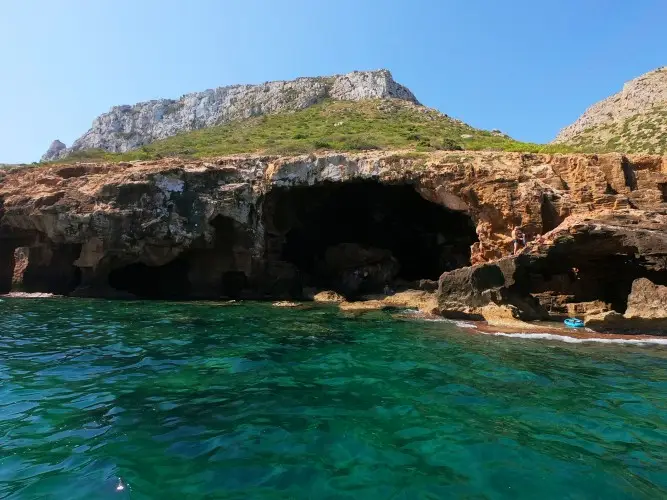
Cala Blanca
It is divided into two coves, Caleta I and Caleta II, which are connected by a stone coastline. This small cove has a rock spit that enters the sea and from which it is possible to get into the water. This fact makes it perfect for practising snorkel. The depth, which is initially very shallow, increases as we start getting into the water to open sea. There we can find a Posidonia meadow. From this cove, there is an access to two viewpoints.gua, la cual es idónea para hacer esnórquel.
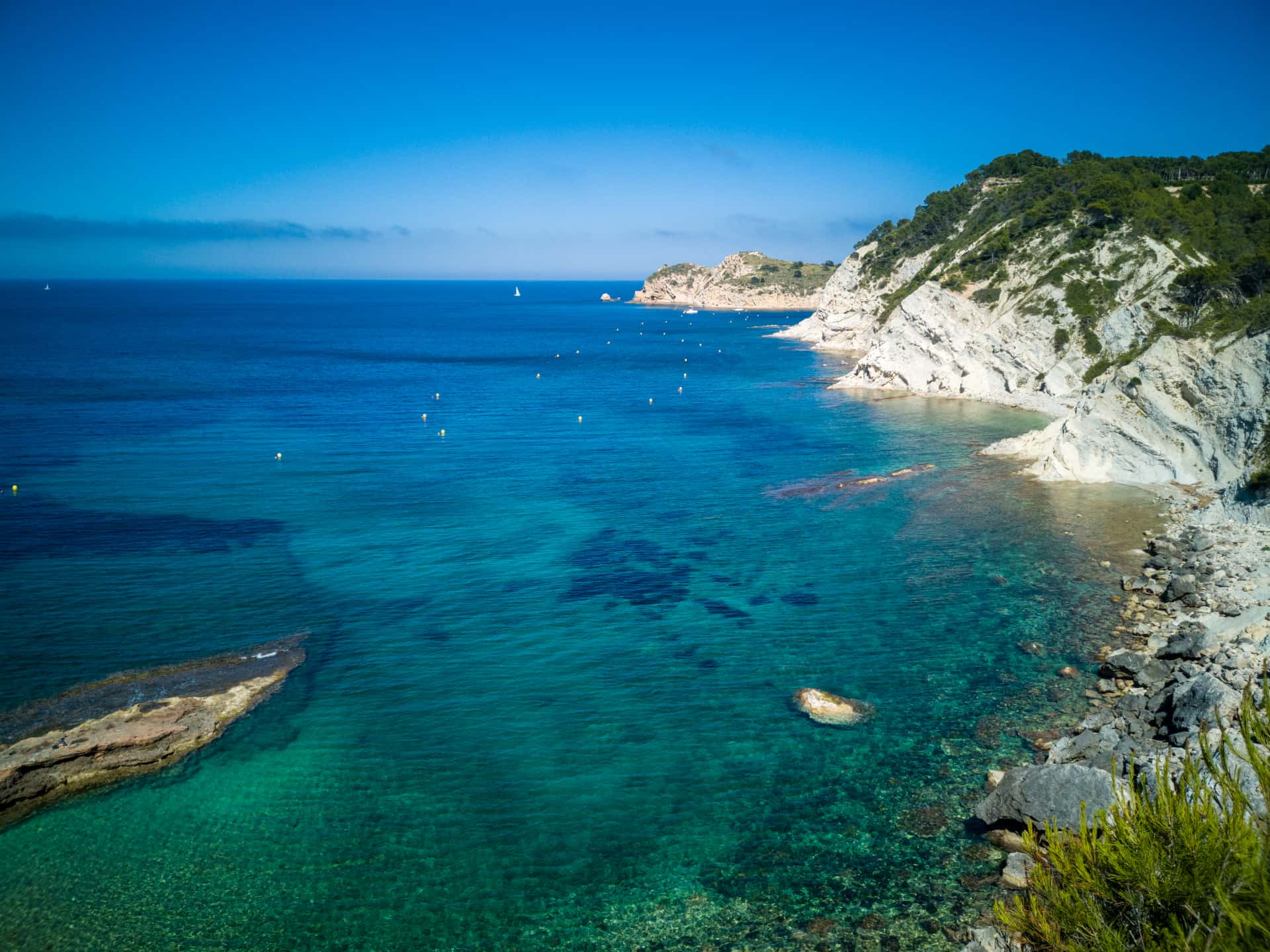
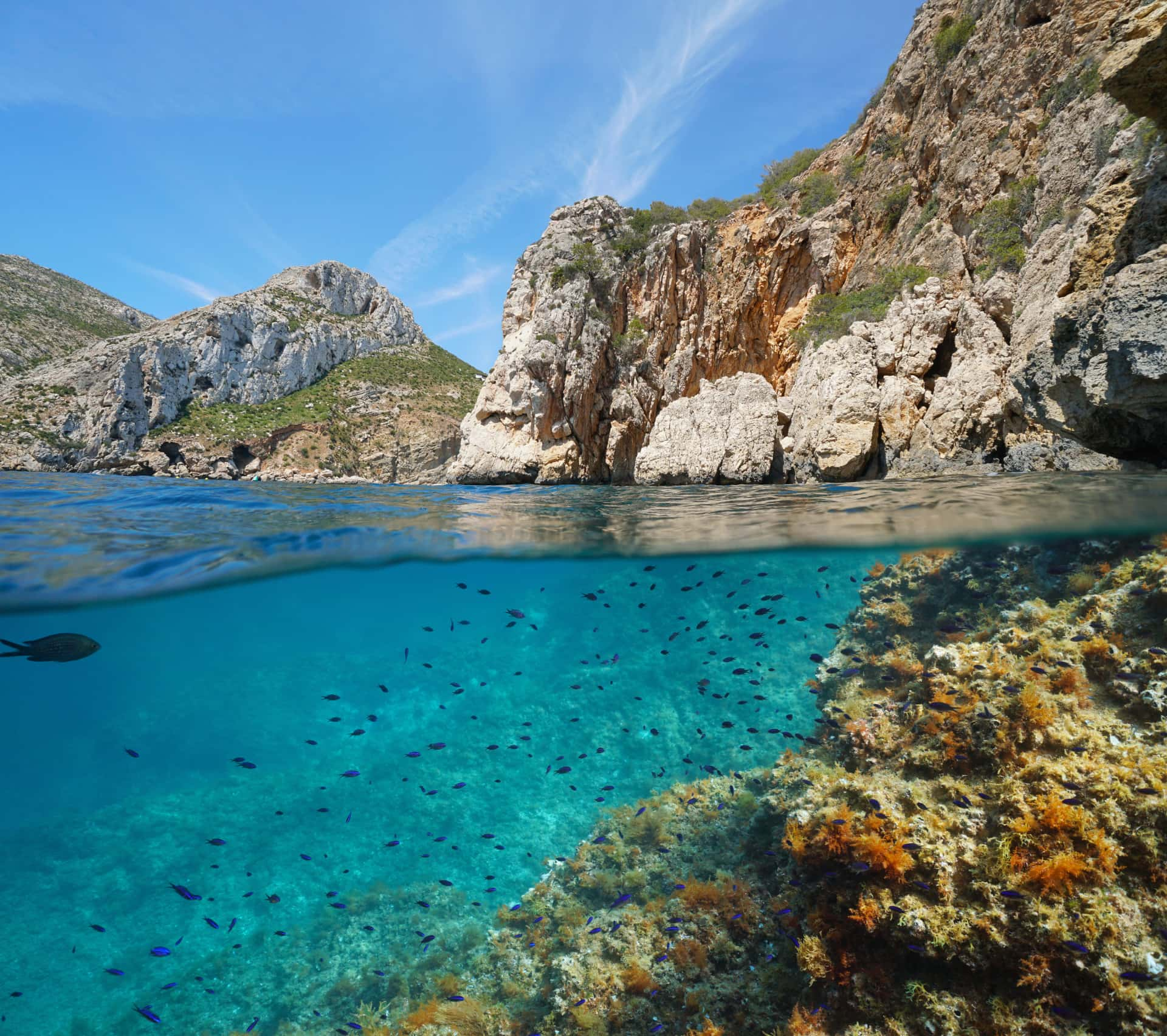
Cala Barraca / Portitxol
The Barraca cove is one of the coastline places with greater personality, not only in Jávea’s coast, but in the whole Valencian Region. In this small gravel and loose-stone beach there are many possibilities for enjoying snorkel. From the northernmost part of the cove, there is a segmented rock platform, the continuity of which is interrupted by fractures that give the bottom a gridded appearance. As we get into the sea, the platform gently starts gaining depth to the moment when big rocks and spits appear like submerged islets. It is possible to go around these islets to find Posidonia and sandy areas. Opposite to the cove, there is the Portitxol island, which is of both great botanical and archaeological interest.simas las posibilidades de disfrutar haciendo esnórquel.
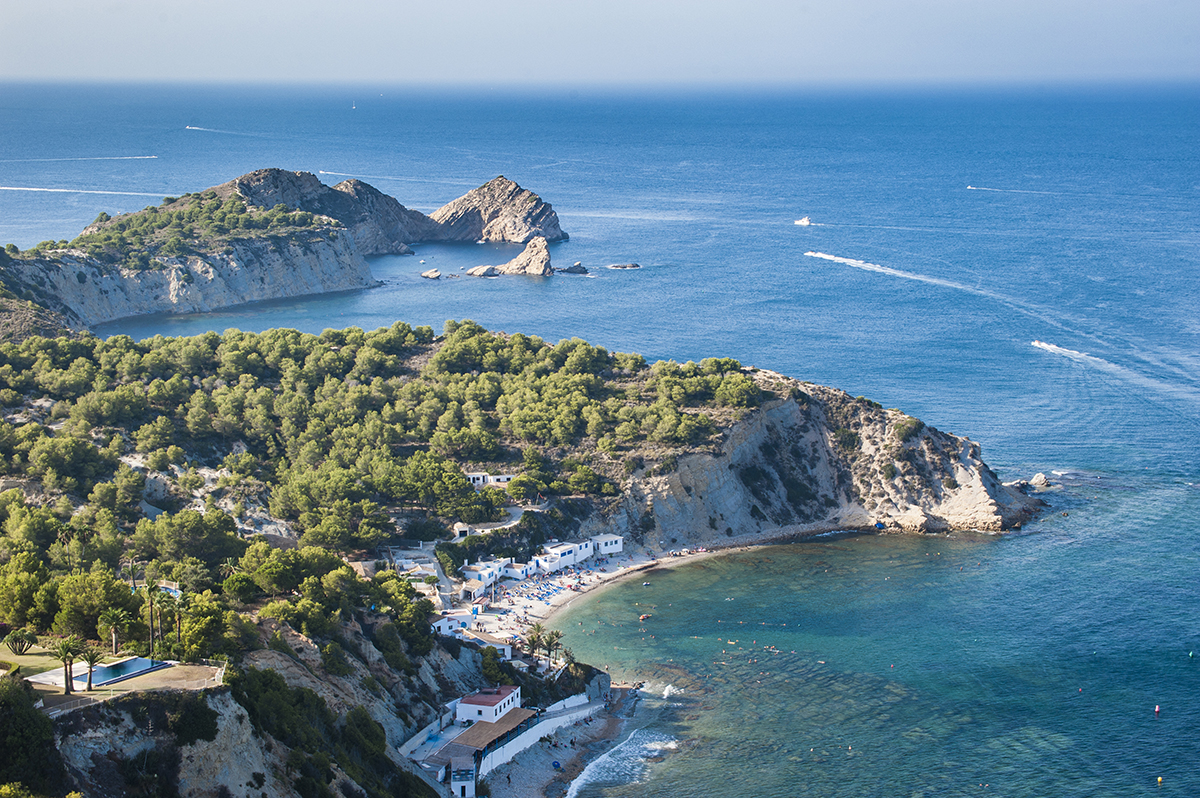
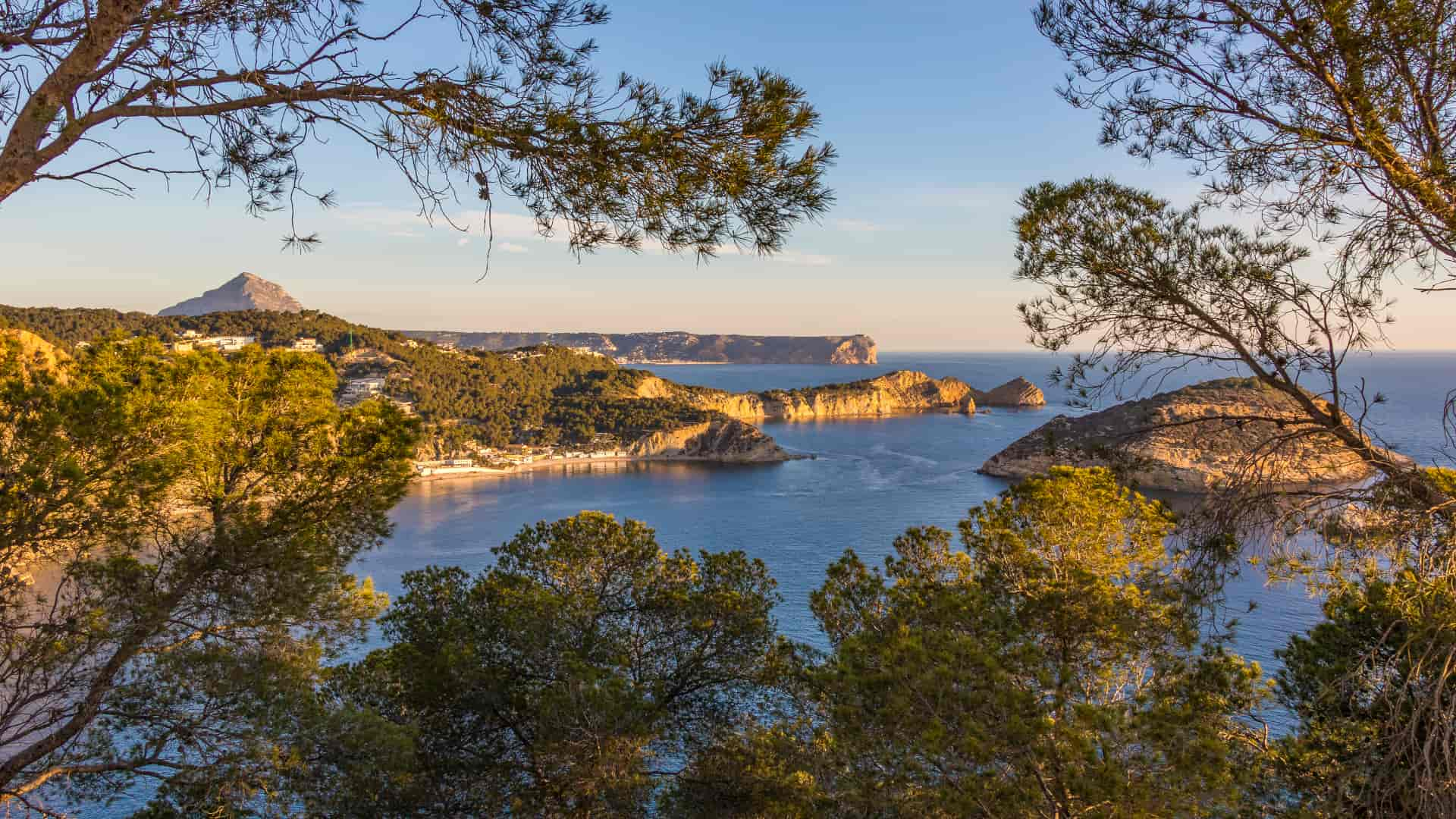
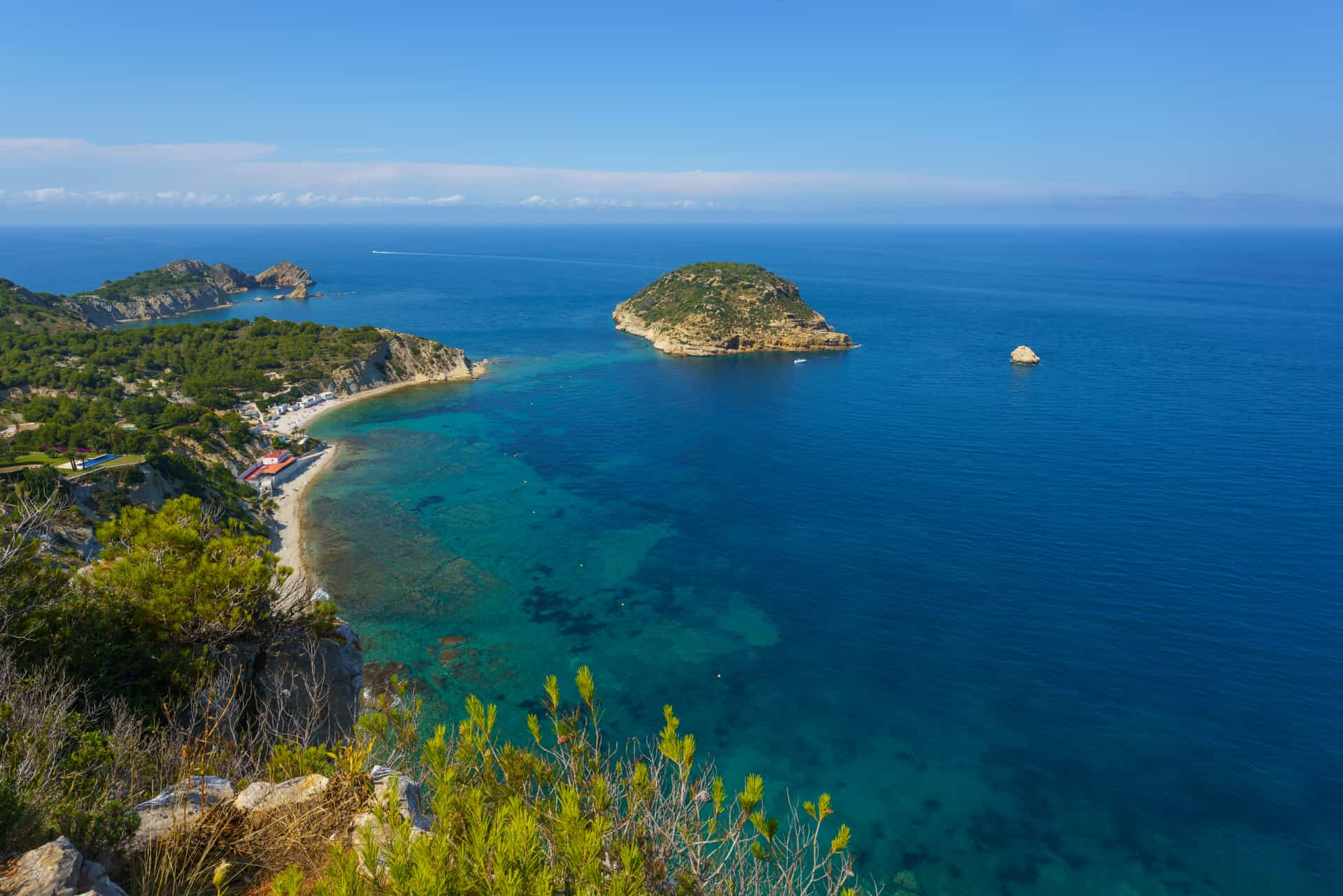
Cabo Negro
This is the cape that lies to the south of the island of Portitxol. It is called Cabo Negro, or Black Cape, because of the intense dark color of its rocks. It can only be reached by boat and is principally a pebbly beach. The waters here have a very special color and there are anchor buoys.
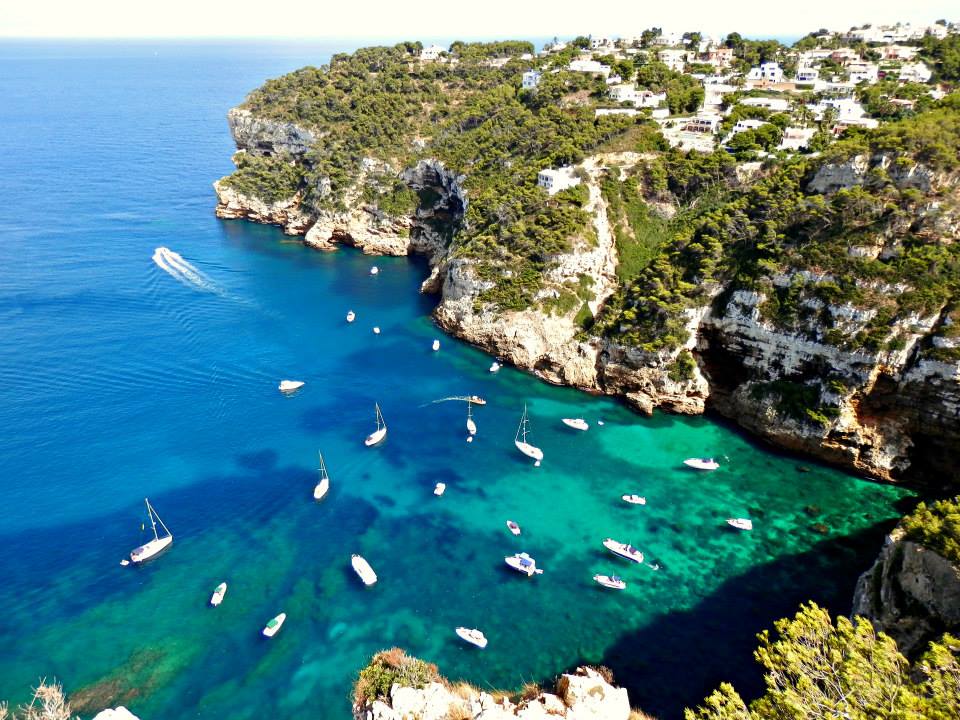
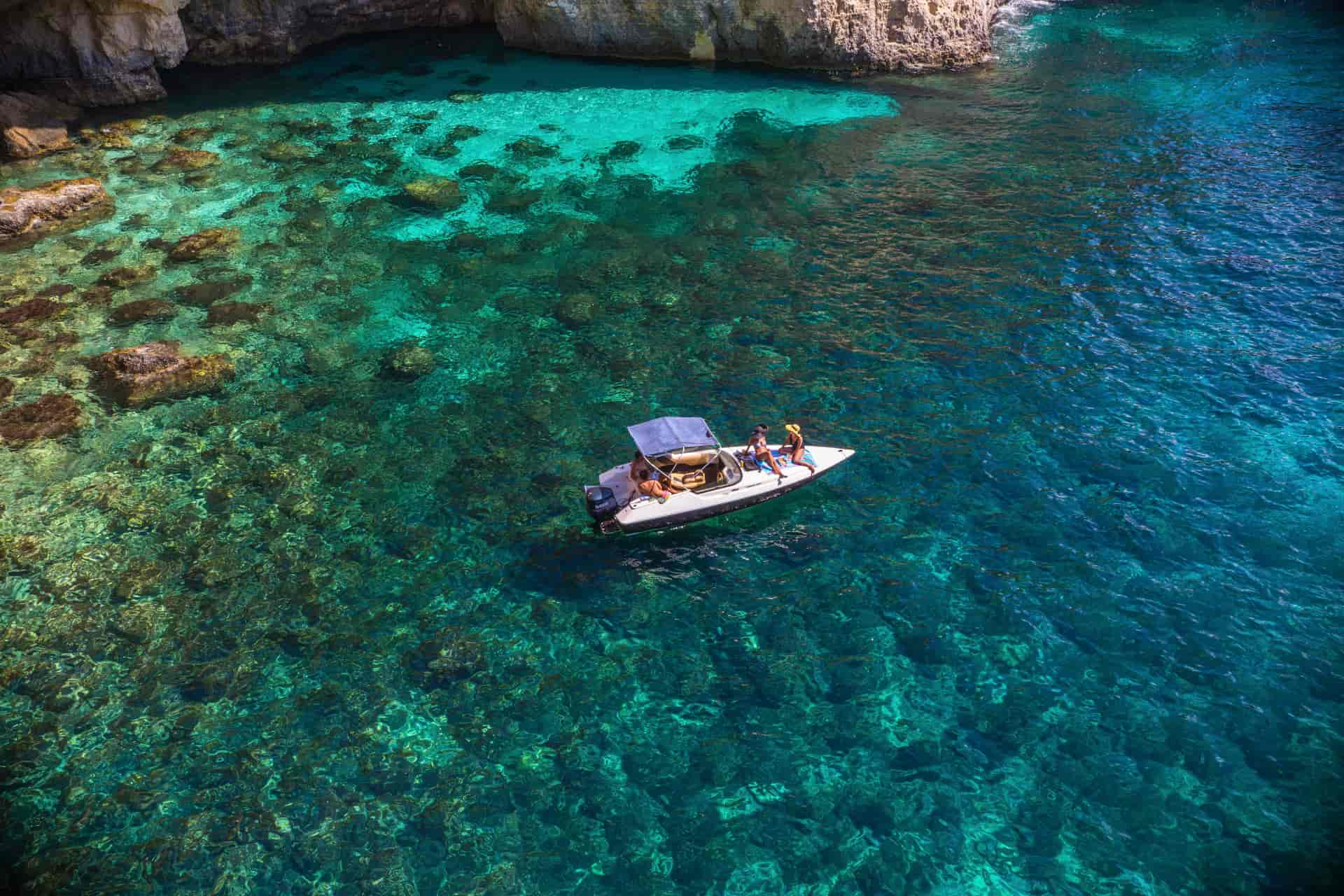
Cala Ambolo
In order to get to the Ambolo cove we must continue in direction to the Nao Cape until we see the diversion for this nudist unspoilt crystal-clear water beach. Initially we will find a rocky bottom with mid-size rocks and, as we move forward, this will change into Posidonia meadows and stunning sandy areas. The proposed route is going around the islet on the left side and noticing all the attractive spots it offers. The variety of material of the sea bottom make it possible to have an abundant biodiversity.
This beach is currently closed due to risk of landslide.
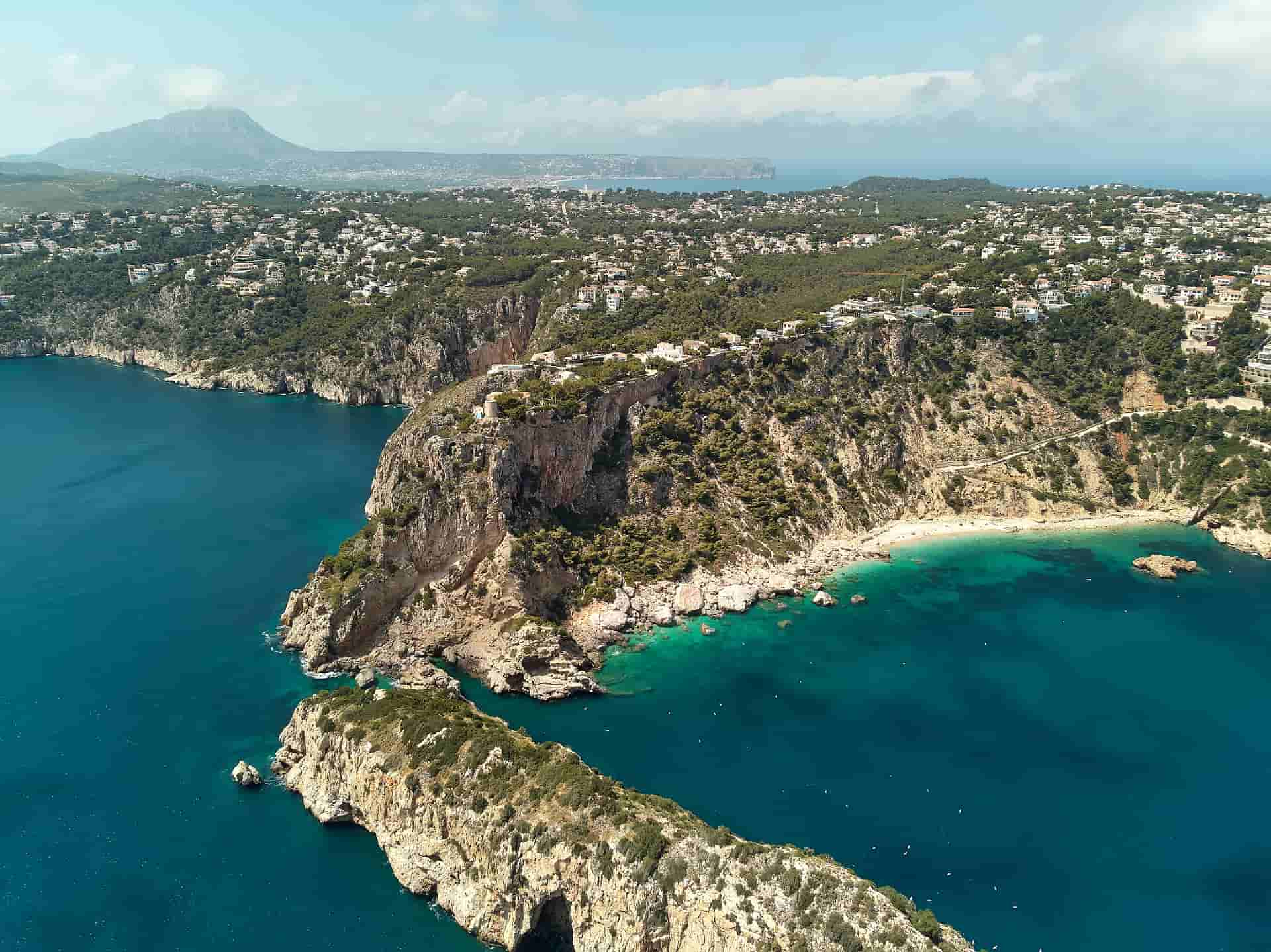
La Granadella
This impressive cove has everything a snorkel enthusiast can wish for. The cove, which has services for all its users and bathers, is located on the Southeast and is close to the Descobridor island, in Nao Cape’s area. Our route will start on the left side of the cove, following the wall from water. There, we will find a small arch in the rocks at -2 m and a hard-rock bottom with mid-size rocks that increase as we move forward. The depth will also increase, and the edge of the wall will become a vertical cliff. It will be easy to reach a depth of -5 meters or even lower.rda de la cala, siguiendo la pared desde el agua.
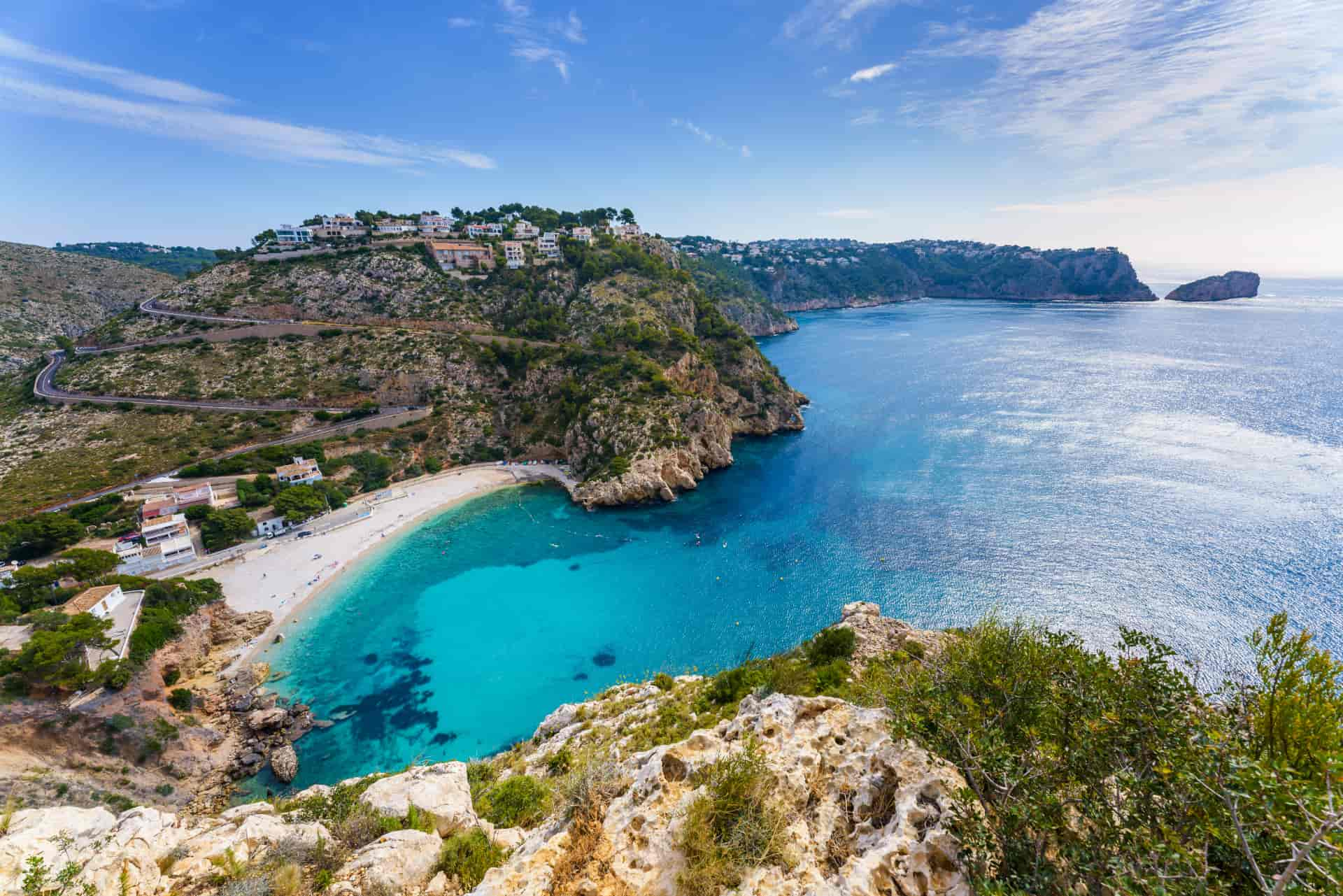
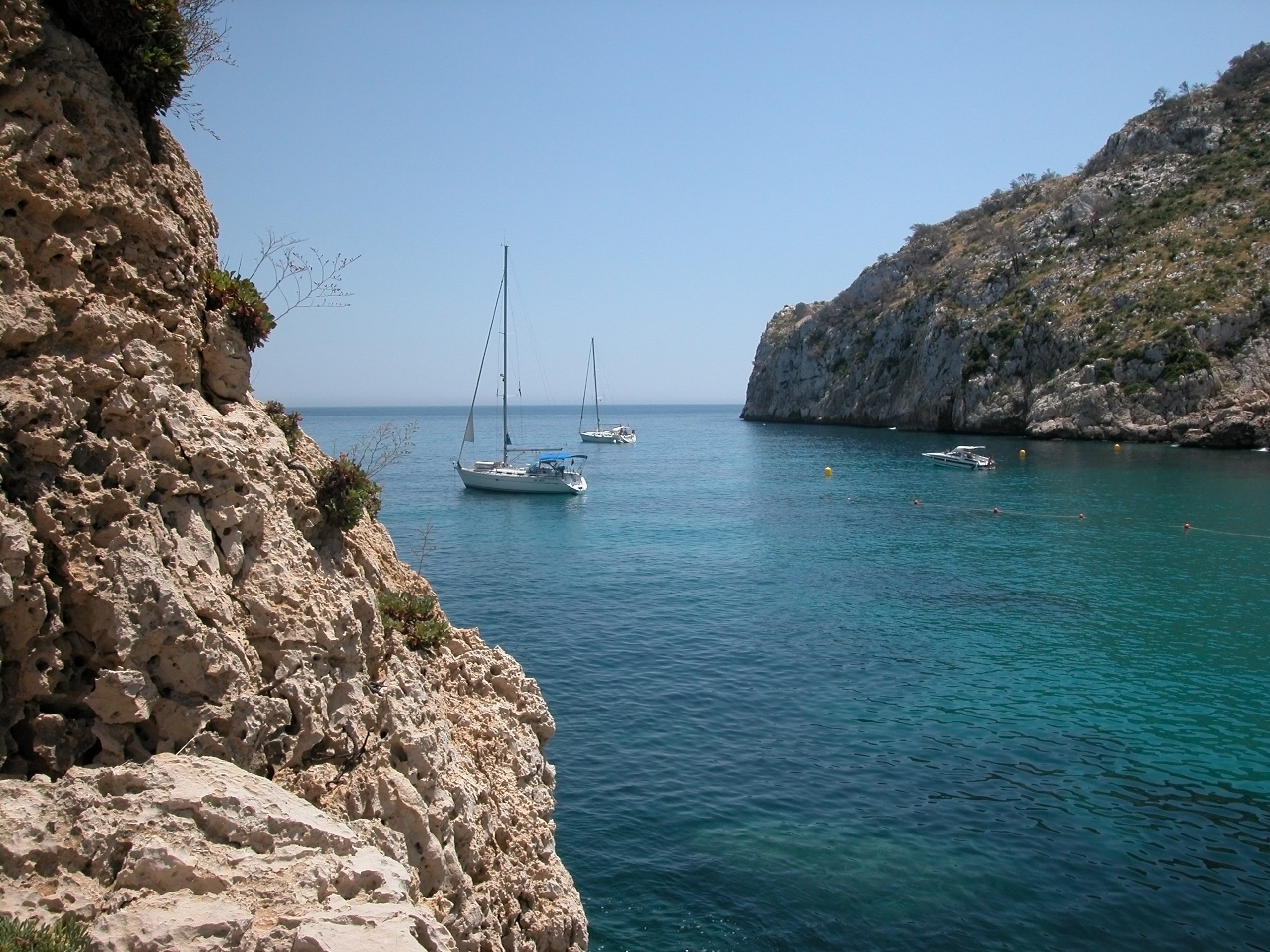
Cala Sardinera
This small unspoilt cove with gravel and boulders is located in the north end of Cape Prim. This beach has a pedestrian access from the Cruz del Portitxol viewpoint, by means of a trail which run by a pristine natural environment. It used to be the best site for the “sardinales”, fine sardine fishing nets which were sunk twice a day at sunrise and sunset, hence the origin of its name. Length: 200 m (approx.) Low occupancy.Mirador de la Cruz del Portitxol, a través de una senda que discurre junto a una naturaleza original e intacta.
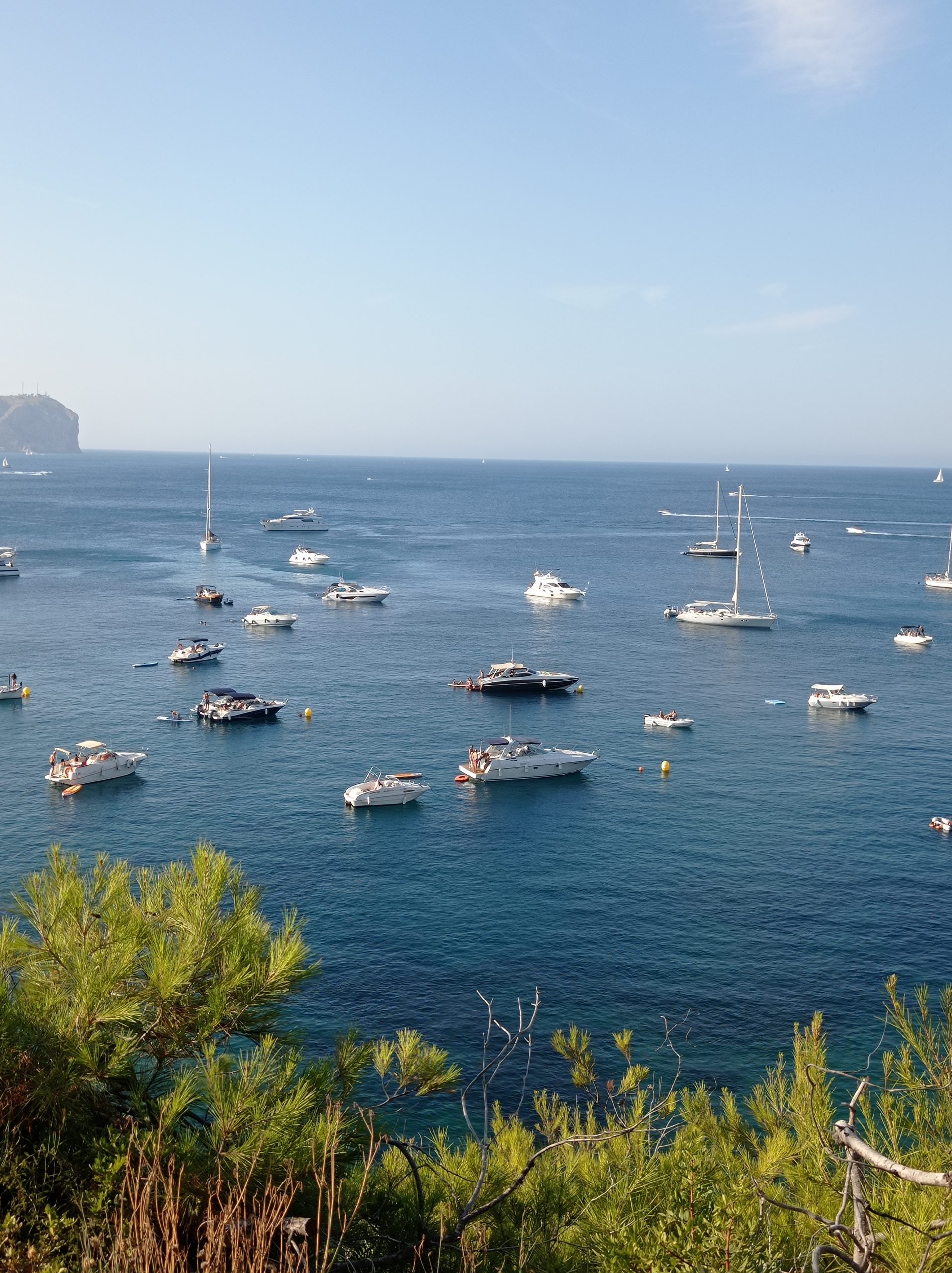
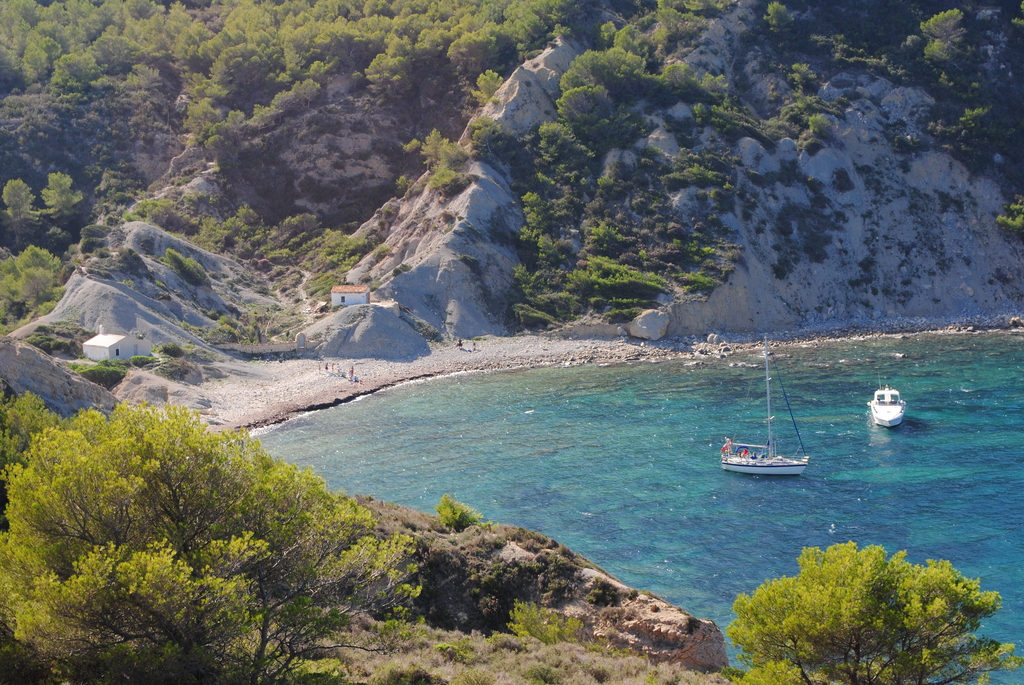
More beaches
La Grava | Muntanyar I | Muntanyar II | L’Arenal
